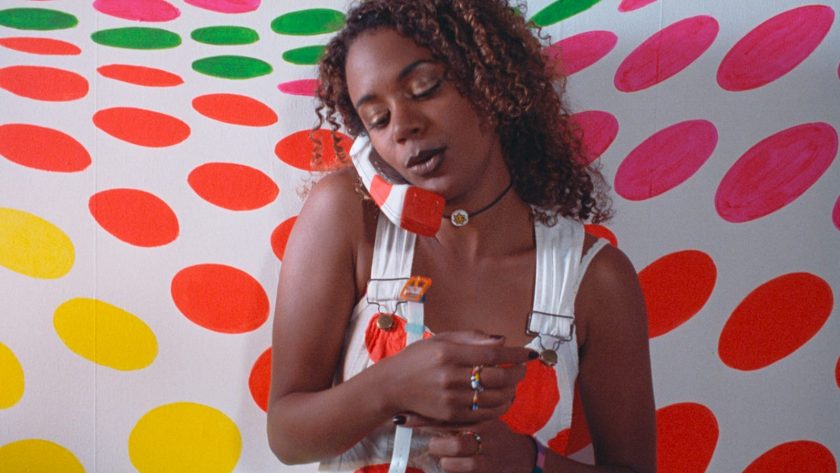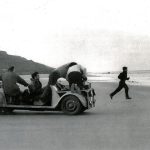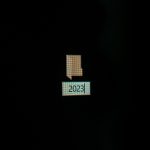Carys Manjdadria-Jenkins returns to the end of the twentieth century (and possibly the world) the final instalment of Gregg Araki’s sci-fi Teenage Apocalypse Trilogy.
At the end of the world, man is beaten to death by Warhol’s tomato soup. Woman slashes herself across her childhood bedroom. Alien drinks beer from the fridge. Boy’s coughing fit turns him into a cockroach, Kafka turns in his grave. In Araki’s Nowhere, the end of the world impresses itself on LA, a purgatory of Slowdive soundtracked carjacks and breakups; VHS cameras catching kaleidoscopes of leather, polka dots, and drug store hair dye. The film flips the city upside down to reveal the seeding teenage wasteland at the heart of twentieth century morality, as the Brady Bunch (cameos by Christopher Knight and Eve Plumb) parent a pierced junkie son. Araki nukes the nuclear family. This fifties perfection is replaced by the phoniness of stilted valley girl slang preventing genuine connection, encasing the vacuous plastic underneath. Such nineties nihilism rang true for the time’s millennium anxiety.
Nowhere stars as the final instalment of Araki’s Teenage Apocalypse Trilogy, in which doom drives teenagers to excess in the face of armageddon. Here, he peels off the plasters that hedonism placed in panic to reveal the true emptiness of a world in which kinky sex and heroin fail to offer escape. Bart and Egg, the two suicides that puncture the tale, are polar opposites of excess and conservative innocence, with one burning out and the other violently disallowed her reservedness in a world so ruined by excess and entitlement. Each are driven to death by televangelist Moses Helper- an MTV generation killed by television. Religion runs underneath Nowhere as the tradition that is both rejected and feared, with each character a promise that the kooky misfits really are as bad as the Bible Belt says they are. Each act becomes a revolutionary middle finger as the End of the World Party draws close and the religious reckoning of this teenage apocalypse looms. At the end of the world, even religion cannot save, and the only way out of purgatory is digging deeper.

Most characters, in fact, are disallowed their happy ending, all corrupted by the dregs of LA. Araki is helmed as the king of the New Queer Cinema Movement that surged throughout the nineties following the nihilism of the AIDs epidemic. Alongside the likes of Derek Jarman, he offered the new camp – giving Beverly Hills the John Waters treatment syringed with LSD and tattoo ink. These characters were unashamedly queer, subverting the subtext that encoded these casual and romantic relationships before. Though polyamory and homosexuality abound, James Duval reprises his Doom Generation storyline as a teen lost in the straight binary, his gay happily-ever-after yanked away by an alien nation that leaves him stuck in heterosexuality. Alienation is embodied in the ray-gunned lizard alien, symbolising the queer youth who felt isolated by the media and giving them names and guns to fight back.
The melancholy behind Araki’s absurd creates a teenage wasteland of its time. Today’s Nowhere is still wrapped in plastic, as Gen X’s nihilism is replaced by Gen Z’s lack of philosophy. Whilst Duval and his friends own their city, the lack of third places and genuine sense of community leaves today’s youth even more lost. Valley girl slang is replaced by TikTok brain rot and the idiosyncratic cartoon character fashion sense is overran by micro trends and status signalling, where wearing a Marc Jacobs Heaven Fallen Angels top makes you a cool kid. Without so much of what made Nowhere the cult classic it remains, today’s teenage wasteland seems to be the second realm of purgatory that Araki promised.




